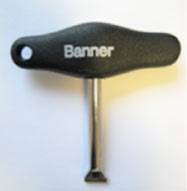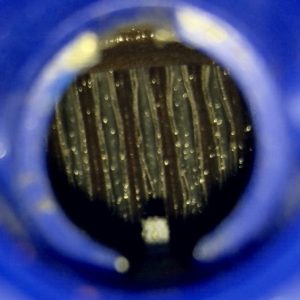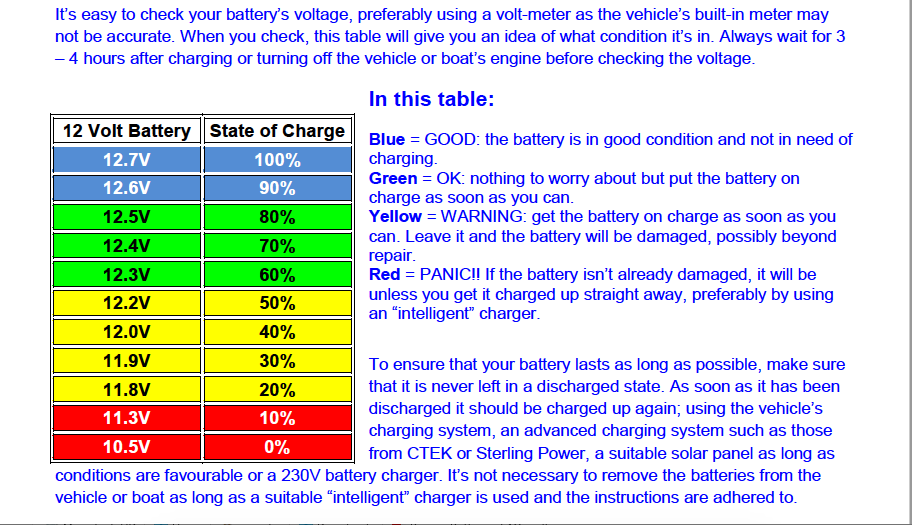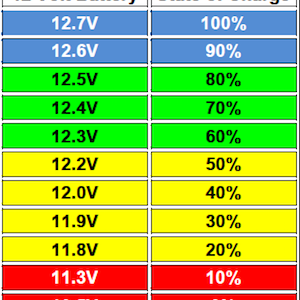This post has already been read 3681 times!
Nick Mawby: “Over the years, Murvi have fitted different types of leisure battery. Our 2001 Morello had gel batteries which required no maintenance. 
Our 2014 has Banner Energy Bull sealed wet batteries, and I was given the impression that they did not need the electrolyte level checking.
After 4 years the voltage dropped after 4 weeks without use, with nothing turned on, and with a solar panel, so I got round to checking; a special screwdriver is required

I was surprised to find the electrolyte level was well below the top of the plates, as can be seen in this photograph taken after one of the caps had been removed.
Each cell required 85ml of de-ionised water.
This is from the FAQ page of Banner Batteries
Finding the right battery for use in a motor caravan is not that simple. The text below is intended to provide some explanations regarding the Energy Bull and shed some light on alternative possibilities.
Charging:
Pay close attention to the appropriate dimensions of the feed cable (in order to minimise voltage loss).The charging voltage for Energy Bull batteries should amount to 14.2 – 14.4V. In order to achieve suitable battery life, the charging current should not amount to more than five times the rated current* (see subsequent calculation).
All in all, the Energy Bull is a good cyclical battery, which forgives a great deal (as opposed to gel or AGM batteries). The “disadvantage” of Energy Bull batteries as compared to AGM or gel batteries relates to maintenance.
For when an Energy Bull battery is employed, it is imperative that the electrolyte level is checked regularly. During intensive use (camping operation) this should take place on a monthly basis, otherwise quarterly and half-yearly inspections are sufficient.
Gel and AGM batteries are maintenance-free.
A reasonable price, insensitivity to high temperatures and higher charging voltages are all positive factors in favour of the Energy Bull.
Solar cells
In the case of solar cells make certain that you have a “good“ regulator. Ideally, this should have pulse-width modulation (PWM), temperature compensation and freely selectable parameters (charging voltage…).Discharging
Inverters require a sizeable amount of discharge current from the battery.
In principle, Energy Bull and gel batteries are unsuitable for high current discharges (>40 times the rated current* for >1min).
Should you require increased amounts of discharge current, we recommend the use of an AGM battery (Running Bull).
*–> Calculation of the rated current follows!Capacity
It is preferable that the batteries are only operated with low discharge depths.
A lead-acid battery can withstand a certain degree of capacity conversion (= number of conversions of the rated capacity).
The flatter the cycle, the higher the number of possible repeats.
As far as cyclical capability is concerned, if handled with care the gel battery offers roughly twice the service life of an Energy Bull.Degassing
Should the battery be installed inside the vehicle, it must be fitted with a degassing hose with an external outlet. When selecting a battery please choose a type that has a central degassing connection.
–> This allows the gases created during charging (hydrogen and oxygen) to be conducted out of the vehicle.In a normal operational condition, AGM and gel batteries do not generate any gas (exception: a charger or battery defect). However, for safety reasons a degassing hose must be employed.
Energy Bull batteries generate gases during standard operation and therefore it is essential that a degassing hose is used.*Rated current calculation
Example: 100Ah (K20) Energy Bull 95751
Rated current (In) = 100 Ah: 20 h = 5A
Maximum charging current = 5 x In = 25A
I have printed out this reminder to keep in the van:

This came from RoadPro Banner Batteries FAQs
